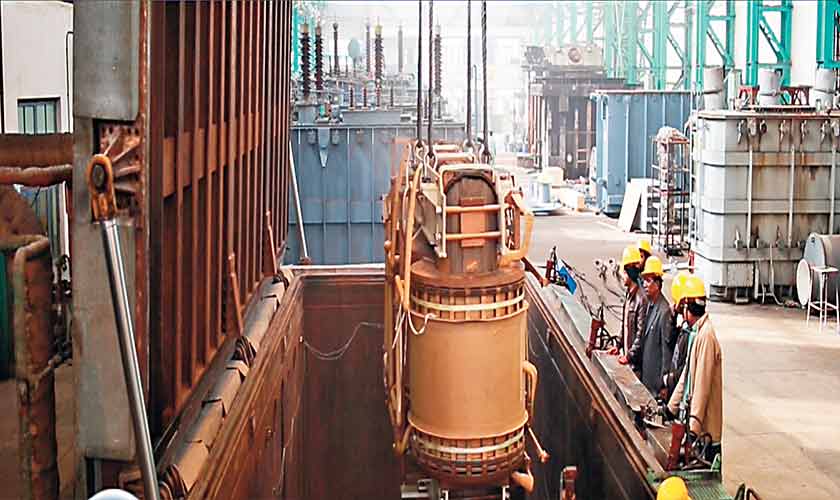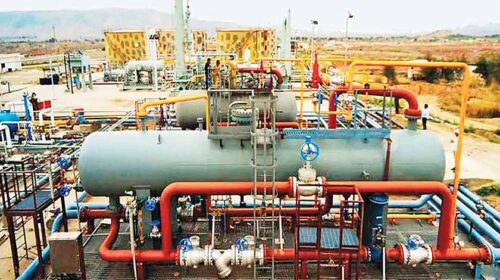June 2016 is marked with the government’s holistic decision to transfer Heavy Mechanical Complex (HMC), the giant industrial unit, to the Strategic Plans Division (SPD), and the beginning of a new era for reviving the company’s past glory.
As a result of long and unsuccessful privatisation process, HMC had reached a critical stage of gradual denudation of its recognised strengths in human resources, technologies, and productivity. The situation had resulted in several constraints and limitations, primarily that of technical and financial nature. The process of divesting the c omplex had played a pre-dominating role in making it nearly a sick unit. In 1989, half-hearted efforts were made by the government to restructure the company that did not bring the desired results and its production capacity remained grossly under-utilised.
Privatisation process of the industrial SOEs started in 1992. Various attempts were made in subsequent years to divest HMC but without any success. The 1990s therefore saw decline of the company as its order book substantially reduced and the government also withdrew various fiscal concessions and policy support for indigenisation that were available to HMC in the past. The technology assimilated and expertise developed by HMC in sugar and cement industries was not being utilised effectively and properly mainly due to saturation in these sectors. Resultantly, it lagged in its core activity areas and could not keep pace with the technological developments around the world. Also, its product diversification plan could not be implemented due to lack of financial and marketing support from the government through its policy framework. Still, HMC was able during 1998-2001 to develop collaborative arrangements with the international companies to produce equipment for chemical, oil, gas, and power sub-sectors, in line with the market demand.
Performance of the company therefore improved significantly during subsequent years. Nonetheless, its role remained restricted to that of a sub-contractor, and it failed to achieve higher value-addition, optimal indigenisation, and sustainability in new areas, including equipment and components produced for strategic organisations like the Khan Research Laboratories (KRL) and the Pakistan Atomic Energy Commission (PAEC). The contributions made by HMC managing directors Anwar Janjua and Ali Enser during this critical period were notable.
During the year 2007 HMC was delisted from privatisation and was mandated to implement a rehabilitation and upgradation plan in view of its depreciated plant machinery. The government had decided to approve proposals for upgrading its technology and machinery based on the plan for which an initial allocation of Rs1 billion was also promised. The government was expected to engage independent engineering consultants to carry out detailed studies, seeking administrative and technical approval of recommendations for revival and restructuring of the company.
The fact is that HMC production facilities have become outmoded and anachronistic, and thus plant capability is no more compatible. When installed in 1970s its plant machinery was well-advanced to the level that even engineering industrial units in China were not having comparable facilities. A typical example is that of a large 3,000-tonne capacity hydraulic press, which was especially designed by the Chinese for installation at HMC given that a hydraulic press of this large size was not available in China at that time.

The fact is that HMC production facilities have become outmoded and anachronistic, and thus plant capability is no more compatible. When installed in 1970s its plant machinery was well-advanced to the level that even engineering industrial units in China were not having comparable facilities
Since then, however, no major investment has been made to replace and modernise the installed plant machinery, though rehabilitation of major machines was done at HMC on a regular basis under supervision of the Chinese engineers. A few schemes were prepared but could not materialise due to lack of requisite support from the government. Only a few machines were added during 1980s from the western sources to augment its capabilities in the manufacture of components for thermal power plant.
Thus, HMC was placed under direct control of the Ministry of Industries & Production during the government of General Pervez Musharraf. HMC was given to the SPD, and Chairman PAEC (Anwar Ali) was appointed chairman of the board of directors. Somehow, within two years the SPD lost interest in managing HMC, and its setup was reorganised by the ministry. Now the Minister for Industries & Production was made chairman of HMC, and its board of directors was reconstituted, also to include the secretary and additional secretary (or joint secretary) of the ministry. HMC’s Dr Mohammad Ashraf Butt was appointed the CEO.
It was during this period that an ambitious balancing, modernisation, rehabilitation and expansion (BMRE) plan estimated to cost Rs21.54 billion with foreign exchange component of $156.44 million was prepared. Steel melting, casting and forging facilities were to be overhauled and upgraded by installing modern instrumentation and by adding an induction furnace and a heavy-duty forging press. Heavy duty computers, numerically controlled (CNC) machines, precision welding machines, material preparation equipment and others were also to be installed, according to plan.
Since HMC’s competitive edge in the areas of sugar and cement has eroded over a period of years, it was planned to expand and diversify its products range to cover equipment for energy, chemical, petrochemical, agro-based and other industries, and infrastructure sector, besides acquiring latest technology for its product line. A well-conceived business plan, on short and long-term basis, was thus in place as per the BMRE plan with focus on manufacturing, in a big way, major and critical equipment for power generation plants based on various energy resources. The comprehensive product range was planned to include equipment for hydroelectric, coal-based, thermal, wind power, and urban and industrial waste power. Meanwhile, the Product Design Center, a major component of the BMRE project, was upgraded and renewed emphasis was placed on acquisition of advanced technology.
International tenders for the BMRE equipment were invited along project financing. As expected and logical, the response was only from the Chinese companies. There were three bidders but only one bidder qualified as technically and commercially responsive. It was the state-run China IPPR International Engineering, a daughter company of the original designer and planner of HMC. In 2011. China offered the foreign exchange component for the BMRE project. The project however remained unimplemented, primarily due to the political-bureaucratic complicity to make commissions and kickbacks in the deal.
Given these conditions, it was therefore a prudent decision to transfer HMC to SPD/PAEC for management and for implementing the long-delayed BMRE plan. First, a revised feasibility study was prepared by new owners through consultants. Then international tenders were issued for procurement of machinery but without success. It was only in January 2021 that HMC embarked on implementing the BMRE plan, in phases. It is now commissioning a bar rolling mill of 150,000 tonnes per annum capacity and upgrading the existing continuous casting plant. Also, the electric arc furnace and ladle furnace are being installed for steelmaking, as envisaged in the BMRE plan. Recently, HMC/PAEC has signed agreements with six Chinese companies for strengthening its technical capacity and capability to meet future demands of industrial equipment domestically.
The business plan has been modified but, seemingly, a pragmatic approach has not been adopted. With the commissioning of a bar rolling mill and converting steel billets it plans to produce steel rolled products required for construction industry, instead of high-quality steelmaking as originally planned. Likewise, the company plans to fabricate steel towers for transmission and distribution of 220kv and 500kv electricity. This is disappointing. Restructuring of HMC at huge cost was planned for undertaking production of high-tech and value-added products, which is not currently focused. Reportedly, no efforts have been made to acquire state-of-the-art technology for manufacturing equipment for energy sector including power plants based on renewable energy resources, which is the planned core business. It shall be in national interest that HMC’s original character and charter of producing capital goods shall be retained.
Prospects for growth of HMC are indeed very promising, and major re-structuring will make it once again a viable entity for a long term. While the company is celebrating the golden jubilee its new owners shall remember its founding fathers and past leaders, as some are already drifted in oblivion.





